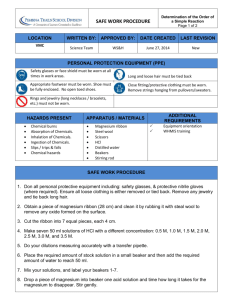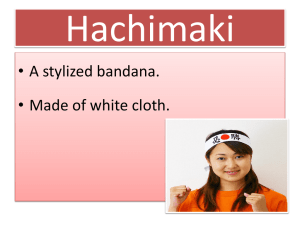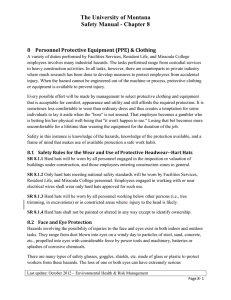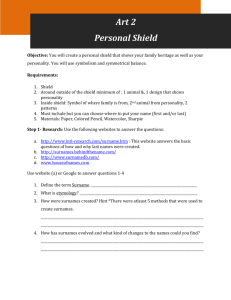USPS 04/11 Appendix 2 - University of Oxford
advertisement
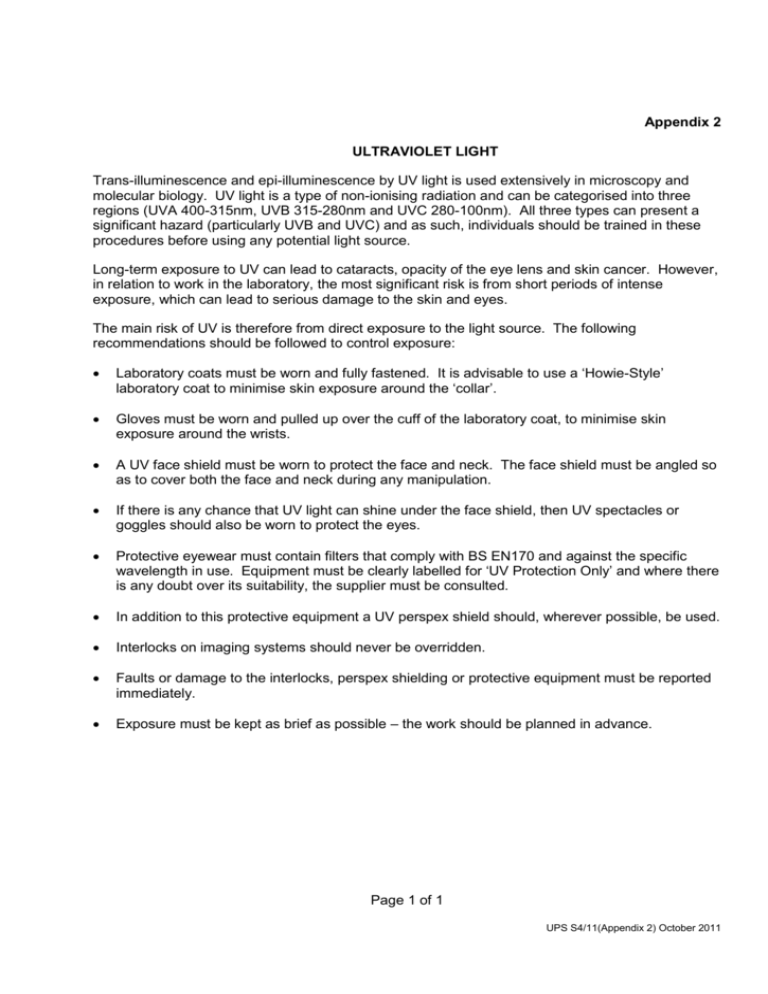
Appendix 2 ULTRAVIOLET LIGHT Trans-illuminescence and epi-illuminescence by UV light is used extensively in microscopy and molecular biology. UV light is a type of non-ionising radiation and can be categorised into three regions (UVA 400-315nm, UVB 315-280nm and UVC 280-100nm). All three types can present a significant hazard (particularly UVB and UVC) and as such, individuals should be trained in these procedures before using any potential light source. Long-term exposure to UV can lead to cataracts, opacity of the eye lens and skin cancer. However, in relation to work in the laboratory, the most significant risk is from short periods of intense exposure, which can lead to serious damage to the skin and eyes. The main risk of UV is therefore from direct exposure to the light source. The following recommendations should be followed to control exposure: Laboratory coats must be worn and fully fastened. It is advisable to use a ‘Howie-Style’ laboratory coat to minimise skin exposure around the ‘collar’. Gloves must be worn and pulled up over the cuff of the laboratory coat, to minimise skin exposure around the wrists. A UV face shield must be worn to protect the face and neck. The face shield must be angled so as to cover both the face and neck during any manipulation. If there is any chance that UV light can shine under the face shield, then UV spectacles or goggles should also be worn to protect the eyes. Protective eyewear must contain filters that comply with BS EN170 and against the specific wavelength in use. Equipment must be clearly labelled for ‘UV Protection Only’ and where there is any doubt over its suitability, the supplier must be consulted. In addition to this protective equipment a UV perspex shield should, wherever possible, be used. Interlocks on imaging systems should never be overridden. Faults or damage to the interlocks, perspex shielding or protective equipment must be reported immediately. Exposure must be kept as brief as possible – the work should be planned in advance. Page 1 of 1 UPS S4/11(Appendix 2) October 2011
